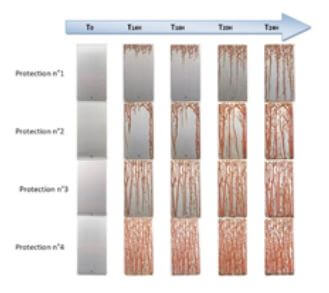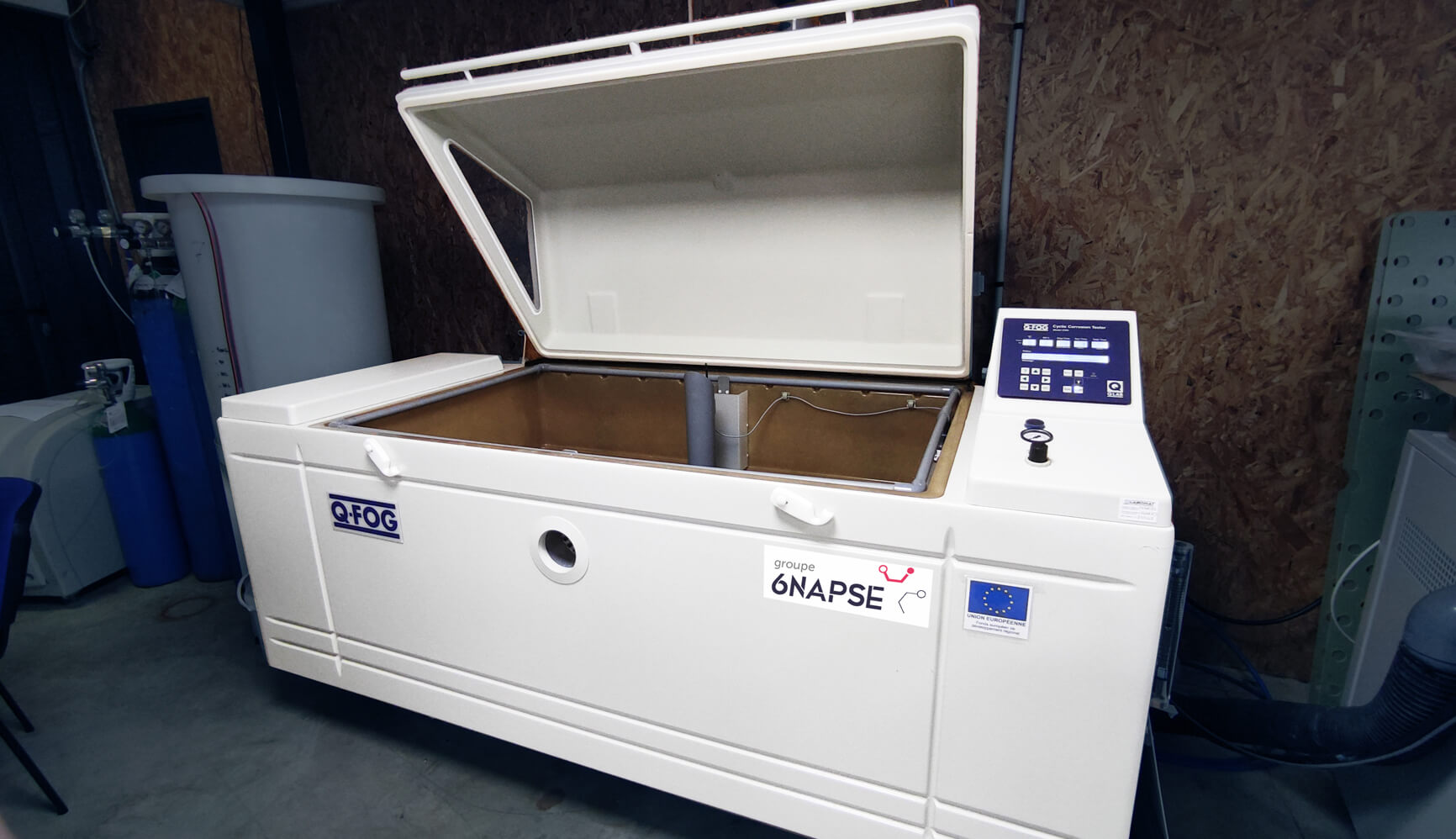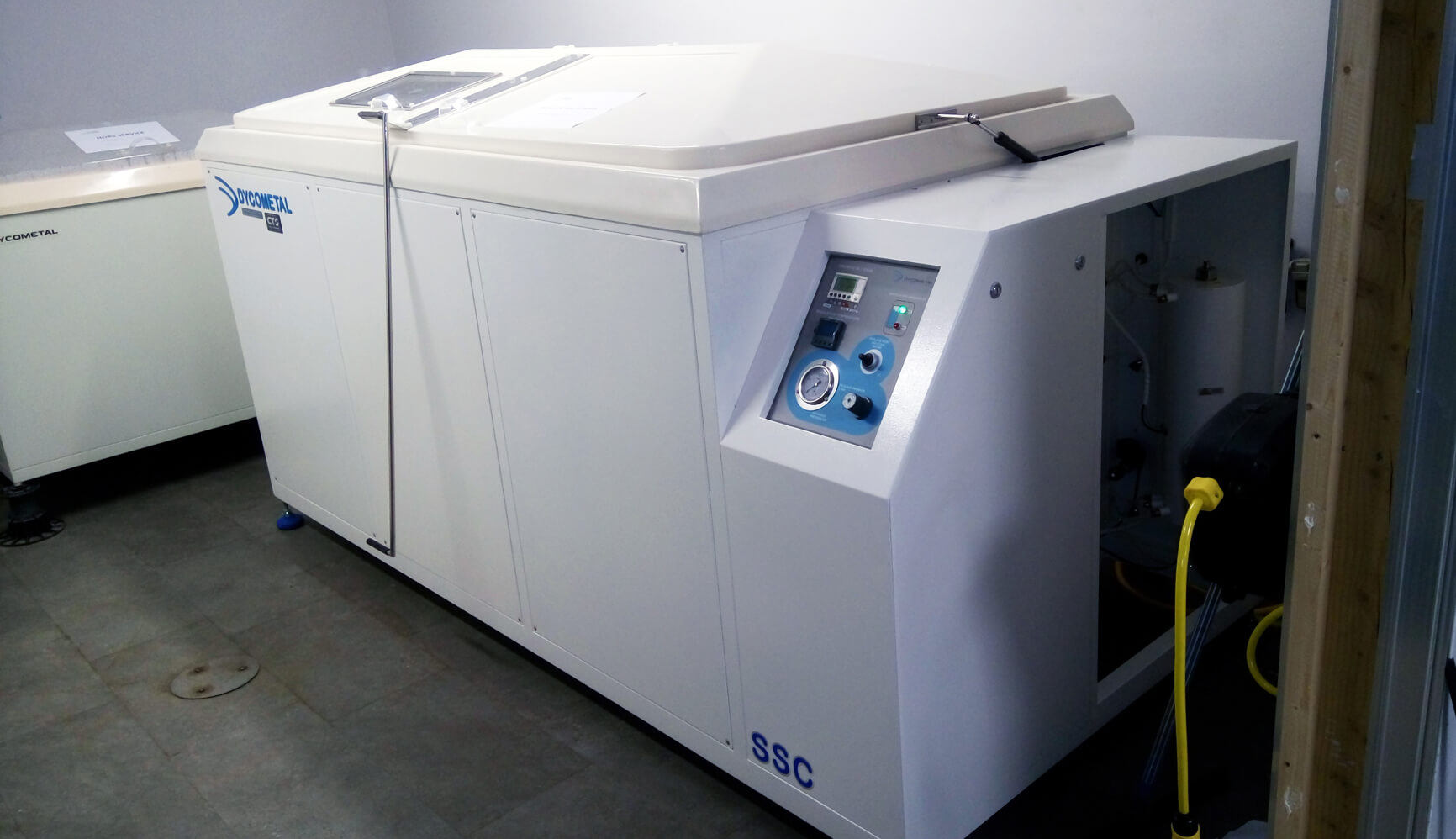Salt spray testing

We carry out salt spray testing in laboratory according to the NF EN ISO 9227 and NF EN ISO 60068-2-11 standards.
Salt spray testing: study of corrosion phenomena
The durability of a material or a product has always been at the center of the concerns of buyers around the world. The use of metallic materials has many mechanical advantages that we cannot do without in all sectors of activity.
The main drawback is its sensitivity to oxidation in a corrosive atmosphere, which has an impact on the product in terms of aesthetics and mechanical characteristics.
In order to limit the phenomena of oxidation of metallic materials, it is necessary to choose an appropriate protection (surface treatment or paint) which will allow to meet the life of the product.
Performing neutral salt (NSS) or acetic (AASS) fog tests in the laboratory makes it possible to check the corrosion resistance of an assembly or sub-assembly in order to:
- Determine areas susceptible to corrosion
- Checking the effectiveness of a protective paint
- Qualify the choice of a surface treatment
- Compare the performance of parts from different suppliers
- Study the evolution of a corrosion phenomenon
Expose materials to a saline or corrosive atmosphere

Standards
Neutral or acetic salt spray tests can be carried out according to standards DO-160, ISO 9227, ASTM B117, D17-1058 (RENAULT and PSA), ISO 60068, etc.
Cycled salt spray tests
The 6NAPSE Group also performs cycled salt spray tests on large and heavy parts.
Indeed, the resistance of the products to various conditions is an essential step to be validated. The different cycles necessary for the validation of a product can include:
- Neutral salt spray cycle (NSS)
- Acetic salt spray cycle (AASS) : NSS solution + glacial acetic acid
- Forced drying cycle (or forced convection)
- One humidification cycle (Temperature/Humidity)
- Dry air cycle
- Rinse cycle
- Water spray cycle
- …



| 5 chambers | Temperatures | Dimensions | Admissible mass |
| E-060 : BS-SSC 400 DYCOMETAL 2036-04 | Ambient air at +50°C | 750 x 1070 x 550 | ? |
| E-197 : BS-SSC 1000 DYCOMETAL 3424-14 | Ambient air at +50°C | 820 x 1600 x 640 | ? |
| E-217 : BS 610 1000 ERICHSEN 556 | Ambient air at +50°C | 1100 x 1000 x 800 | 150kg distributed max |
| E-249 : BS-SSC 2000 DYCOMETAL 04164-19 | Ambient air at +50°C | 1000 x 1800 x 990 | 80kg max |
| Q-FOG CRH1100-HSC | Salt spray-Humidity : ambient air at +60°C Shower : ambient air at +50° | 144×80×46 cm (57×32×18 in) | 500kg distributed max |

 Analyses et Surface laboratory has COFRAC accreditation (Accreditation n°1-1720 – scope available on www.cofrac.fr) for neutral salt spray corrosion tests according to NF EN ISO 9227 and NF EN standards 60068-2-11.
Analyses et Surface laboratory has COFRAC accreditation (Accreditation n°1-1720 – scope available on www.cofrac.fr) for neutral salt spray corrosion tests according to NF EN ISO 9227 and NF EN standards 60068-2-11.
Contact us to discuss your needs quickly and technically!
